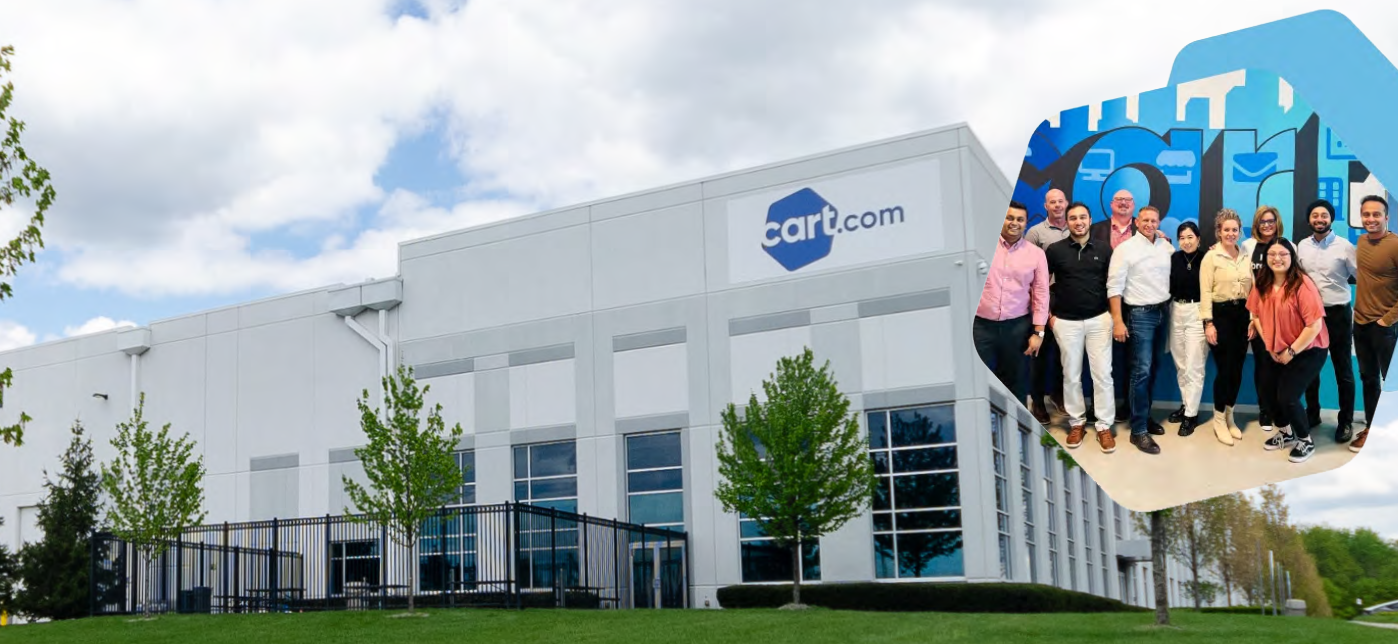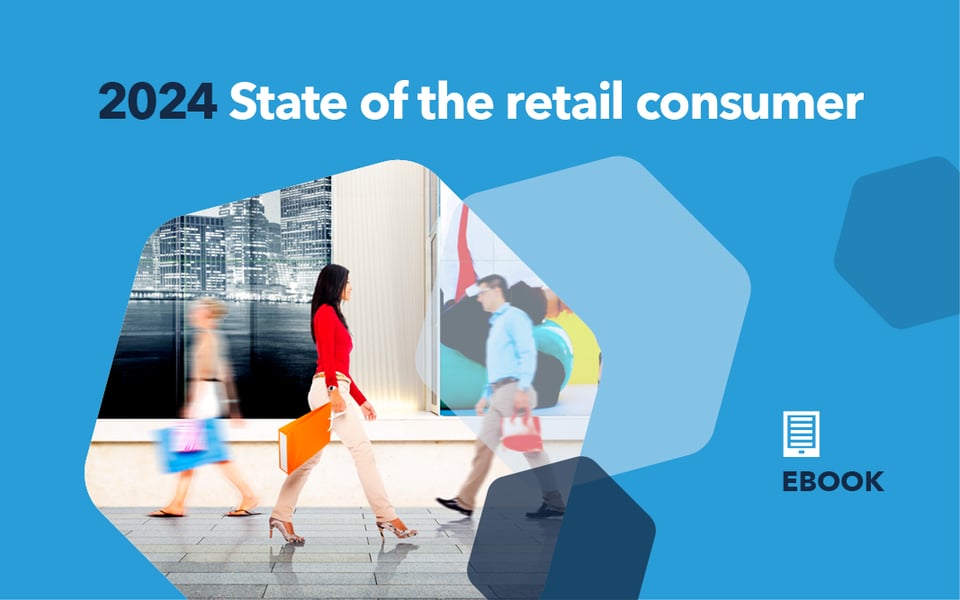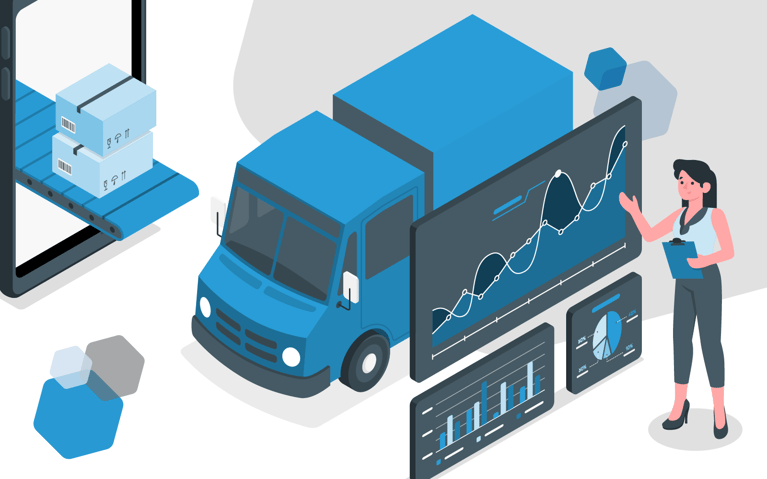This is an excerpt from Cart.com’s newest eBook “2024 State of the retail consumer,” an in-depth look at the consumer mindset, spending, trends, behaviors, desires and more – and best practices and strategies to engage customers. Check out the full eBook here.
Conclusion: Key strategies and best practices for omnichannel retail operations
The economy is improving, and consumer sentiment is up. But still, the retail consumer is weighing their purchases. They’re looking to connect with brands, listening to their peers and they want a seamless customer experience from discovery to delivery. Streamlined and cohesive omnichannel shopping and fulfillment will be key for retailers to attract, retain and grow loyal customers in 2024. It will require effective data, marketing, content and fulfillment strategies – and a unified look into how it all works together.
Creating an omnichannel retail strategy
Omnichannel retail requires seamlessly integrating online and offline channels to provide a unified shopping experience. Brands must use customer data to form strategies that personalize interactions across all touchpoints, whether it’s through a website, mobile app or in-store visit. It’s also about flexibility. For example, offer your customers flexible fulfillment options like buy online, pick up in-store (BOPIS) or curbside pickup. It’s anything that enhances convenience, regardless of what channel they’re using. Moreover, branding, pricing and promotions across all channels should be consistent, which is crucial for maintaining trust and loyalty. An omnichannel approach leverages technology to track your customer journeys and optimize your marketing strategies accordingly to ensure relevance and effectiveness across your platforms.
Data
Data has power, but to leverage it, you must unify and extract meaningful information to utilize it. Data provides valuable insights into customer behavior, preferences and interactions, enabling businesses to understand their audience better and tailor experiences accordingly. It helps identify patterns, anticipate needs and optimize touchpoints to create a more engaging customer journey.
Your best practices for retail data
Assuring data quality assurance
- Regularly audit and clean data to ensure accuracy and consistency.
- Implement validation checks to identify and rectify errors or inconsistencies.
- Utilize data governance frameworks to maintain data integrity and compliance.
Collecting and integrating data
- Collect data from multiple touchpoints, including online and offline channels.
- Integrate data from various sources, such as CRM systems, POS terminals and social media platforms.
- Use APIs and data integration tools to streamline the process and ensure real-time data availability.
- Centralize data in one source of truth.
Inventory management and demand forecasting
- Use historical sales data and predictive analytics to forecast demand accurately.
- Optimize inventory levels to prevent stockouts and overstock situations.
- Implement inventory tracking systems for real-time visibility and efficient replenishment.
Segmenting and personalizing your customers
- Segment customers based on demographics, behavior and preferences.
- Use analytics and machine learning algorithms to personalize marketing messages and offers.
- Deliver targeted content and product recommendations to enhance the customer experience.
Omnichannel optimization
- Create a seamless shopping experience across online and offline channels, merging the physical and digital.
- Use data analytics to understand customer journeys and preferences across different touchpoints.
- Enable features like click-and-collect and ship-from-store to meet customer expectations for convenience and flexibility.
Measuring performance and KPIs
- Define key performance indicators (KPIs)to track the effectiveness of retail operations.
- Monitor metrics such as sales conversion rates, customer acquisition cost and average order value.
- Use data-driven insights to optimize your business strategies.
Securing your data
- Add security that protects customer data from cyber threats and breaches.
- Comply with data protection regulations such as GDPR and CCPA to safeguard customer privacy.
- Conduct regular security audits and training sessions to ensure employee data security awareness.
Marketing
Your marketing efforts drive awareness and attracts customers. By developing strategic campaigns and targeted messages, you can communicate your unique value position and selling points to your target audience. As the retail industry becomes more competitive, marketing is critical for staying top-of-mind with consumers and fostering long-term relationships.
Retail marketing best practices
- Segment and target customers: Divide your audience into segments based on demographics, behavior, or preferences, and tailor marketing campaigns to each group’s specific interests and needs.
- Create an omnichannel presence: Establish a strong presence across multiple channels, including social media, email, website, and physical stores, to reach customers at various touchpoints along their buying journey.
- Use content marketing: Create high-quality, relevant content that educates, entertains or inspires and helps to build brand credibility and attract and retain customers.
- Personalize: Deliver personalized marketing messages, product recommendations and offers that resonate with individual customers, increasing engagement and conversions.
- Focus on the customer experience and journey: Prioritize delivering exceptional customer experiences at every interaction point, from browsing and purchasing to post-sale support, to foster loyalty and advocacy among your customer base.
- Test and optimize: Continuously test different marketing tactics, channels and messaging to identify what resonates best with your audience and optimize your strategies for maximum effectiveness.
- Build authentic, long-term relationships: Focus on building long-term relationships with customers by fostering trust, providing value and engaging in two-way communication, rather than solely focusing on short-term sales goals.
Content
Content is how you engage and educate your consumers. It drives traffic, influences purchase decisions, and helps to establish brand authority within your industry. It’s also used to support the stages of the customer journey, from awareness to post-purchase support, helping you enhance the overall customer experience.
Best practices for content creation
Take a customer-centric approach
- Understand you customers’ content preferences.
- Create content that addresses customer needs, interests and pain points.
- Use customer feedback and data analytics to tailor content to specific segments.
- Provide value and solutions to customer problems rather than purely promoting products.
Create consistency and a brand voice
- Maintain a consistent brand voice and messaging across all content channels.
- Ensure coherence in tone, style and visual elements to reinforce brand identity.
- Establish content guidelines and templates to maintain consistency across teams and platforms.
Add visual appeal and engagement opportunities
- Utilize high-quality images, videos, and graphics to enhance visual appeal.
- Incorporate interactive elements such as quizzes, polls and shoppable content to increase engagement.
Optimize content and use SEO
- Identify relevant terms and phrases for SEO optimization.
- Optimize content for search engines by incorporating keywords naturally into titles, headings and body text.
- Utilize metadata, alt tags and structured data markup to improve visibility and ranking in search results.
Fulfillment
Fulfillment plays a crucial role in retail. It ensures that your customers receive their orders accurately, on time and in good condition. It directly impacts customer satisfaction, loyalty and repeat business. A positive fulfillment experience can enhance the overall shopping journey. Additionally, by optimizing your fulfillment operations, you save money with more streamlined and effective processes.
Best practices for retail fulfillment
Continuously monitor and improve your fulfillment processes so that you are better able to adapt to changing customer demands and market trends. You should also:
- Streamline order processing: Efficient and effective order processing minimizes delays and errors.
- Utilize advanced inventory management techniques: Implement strategies and state-of-the-art technologies to forecast demand, optimize stock levels and reduce out-of-stock situations.
- Implement reliable tracking systems: Use systems that accurately provide real-time visibility into order status and shipment location.
- Invest in the correct packaging: Ensure products arrive safely and undamaged while saving costs by assessing your packaging. Find right-size containers as well as materials that prevent damage.
- Partner with reliable logistics providers: Make sure to partner with providers that give you flexibility, scalability and provide cost-effective, reliable omnichannel fulfillment services.
Unified commerce: Meeting today’s retail consumers needs
Unified commerce aims to seamlessly integrate all retail channels and touchpoints, creating a consistent shopping experience for customers across online and offline platforms. It emphasizes understanding the customer journey to enhance retention and loyalty, breaking down barriers between digital and physical channels. By consolidating data into a centralized source, brands can personalize experiences and streamline operations, ultimately driving business growth. This approach offers both backend insights into consumer behavior and frontend cohesion in the shopping experience, resulting in a more dynamic and customer-centric retail environment. Contact us today to find out more about how Cart.com can help you meet the needs of today’s retail consumer.
Want to learn more? Check out the rest of our eBook about the current state of the 2024 retail consumer – along with strategies and best practices to amplify your customer experience.

-1.webp?width=400)





